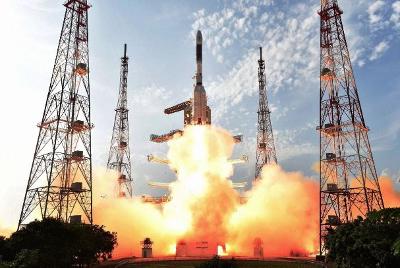
A representational photo.
SRIHARIKOTA (PTI): In its longest-ever flight, the PSLV C-35, carrying India's SCATSAT-1 meant for ocean and weather studies and seven other satellites including from the US and Canada, on Monday lifted off from the spaceport, here.
The launch marked PSLV's longest mission spread over two hours and it is the first time that the rocket is putting its payloads in two different orbits.
The 44.4 metre tall PSLV rocket blasted off at 9.12 AM and 17 minutes later injected SCATSAT-1 in orbit.
"SCATSAT-1 has been successfully injected in orbit," ISRO said.
The 371 kg SCATSAT, the primary satellite meant for weather forecasting, cyclone detection and tracking, was first injected in a Polar Sunsynchronous Orbit (SSO) orbit while the seven others will be injected in a lower orbit after over two hours, the first time the rocket is putting its payloads in two different orbits.
The total weight of all the eight satellites onboard is about 675 kg.
Besides SCATSAT-1, the PSLV rocket is carrying two Indian university satellites, three from Algeria and one each from the US and Canada.
SCATSAT-1 is a "continuity" mission for the Ku-band scatterometer payload carried by SCATSAT-1, which has enhanced features compared to a similar one carried by Oceansat-2 satellite in 2009.
The two academic satellites are PRATHAM, from IIT, Bombay, and PISAT, from BES University, Bengaluru and its consortium. While PRATHAM's objective is to estimate Total Electron Count, PISAT's mission is to design and develop a nanosatellite for remote sensing applications.
The foreign satellites onboard the PSLV are ALSAT-1B, ALSAT-2B and ALSAT-1N (all from Algeria) and Pathfinder-1 and NLS-19, from USA and Canada, respectively.
 Previous Article
Previous Article Next Article
Next Article












The Indian Air Force, in its flight trials evaluation report submitted before the Defence Ministry l..
view articleAn insight into the Medium Multi-Role Combat Aircraft competition...
view articleSky enthusiasts can now spot the International Space Station (ISS) commanded by Indian-American astr..
view article